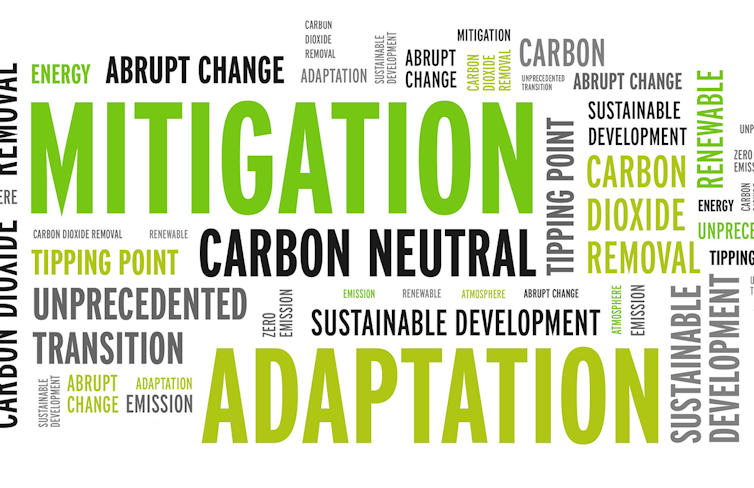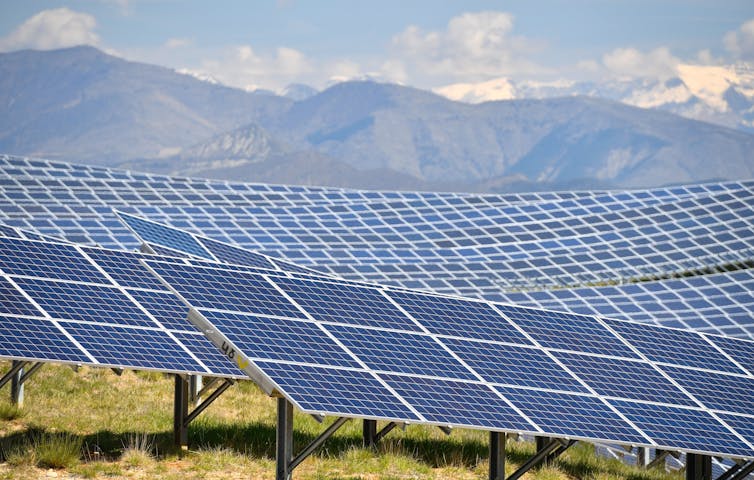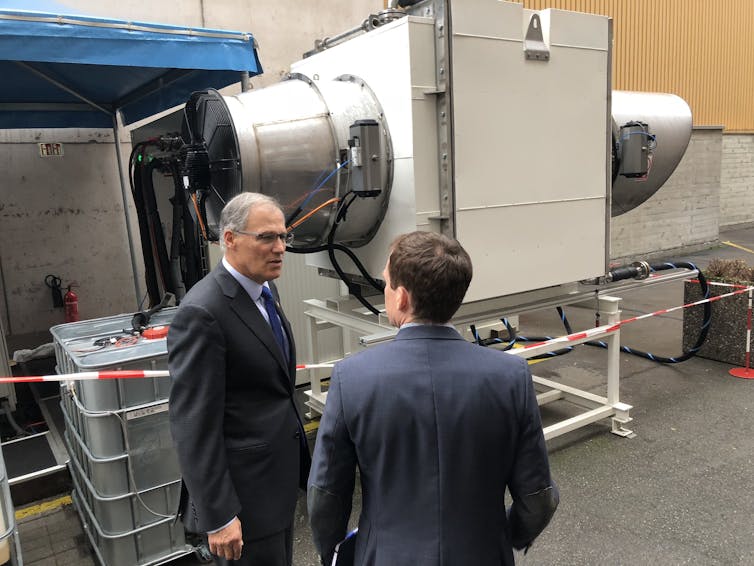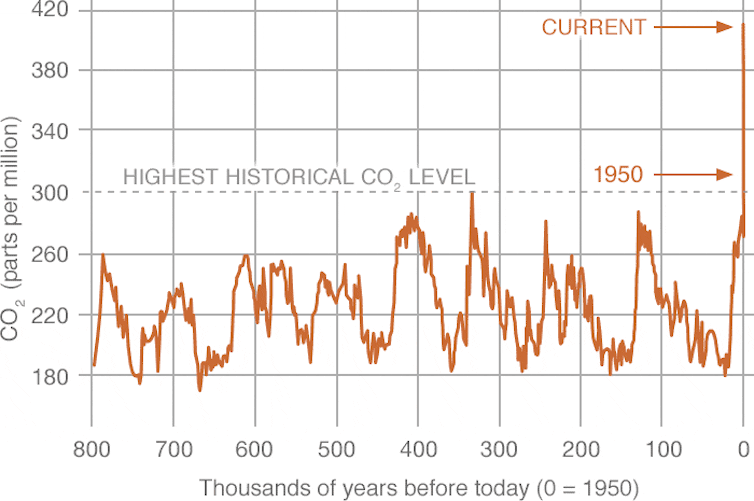
Wändi Bruine de Bruin, USC Dornsife College of Letters, Arts and Sciences
When scientists and policy writers talk about climate change, a lot of technical terms get tossed around: adaptation, carbon neutral, sustainable development. The language can feel overwhelming.
“It sounds like you’re talking over people,” one person said of the terminology during a recent study colleagues and I conducted through the USC Dornsife Public Exchange.
Authoritative reports about climate change can be difficult for nonscientists to understand. With the Intergovernmental Panel on Climate Change scheduled to release a new report on adaptation on Feb. 28, we thought it would be helpful to clarify some of the most common terms used to describe climate change.
We interviewed 20 people about common terms used by climate scientists and climate journalists. We then used their feedback to explain those terms in everyday language. With the help of the United Nations Foundation, we chose eight terms from reports written by the Intergovernmental Panel on Climate Change.
Here’s a guide that may help you to follow the news about climate change. The explanation of each term starts with the technical definition from the IPCC. The text that follows puts it into plain language.
1. Mitigation
IPCC definition: Mitigation (of climate change): a human intervention to reduce emissions or enhance the sinks of greenhouse gases.
Translation: Stopping climate change from getting worse.
When people talk about “mitigation” they often focus on fossil fuels – coal, oil and natural gas – used to make electricity and run cars, buses and planes. Fossil fuels produce greenhouse gases, including carbon dioxide. When these gases are released, they linger in the atmosphere. They then trap heat and warm the planet.
Some ways to mitigate climate change include using solar and wind power instead of coal-fired power plants; making buildings, appliances and vehicles more energy efficient so they use less electricity and fuel; and designing cities so people have to drive less. Protecting forests and planting trees also help because trees absorb greenhouse gases from the atmosphere and lock them away.

2. Adaptation
IPCC definition: In human systems, the process of adjustment to actual or expected climate and its effects, in order to moderate harm or exploit beneficial opportunities. In natural systems, the process of adjustment to actual climate and its effects; human intervention may facilitate adjustment to expected climate and its effects.
Translation: Making changes to live with the impacts of climate change.
Climate change is already happening. Heat waves, wildfires and floods are getting worse. People will have to find ways to live with these threats. Los Angeles, for example, is planting trees to help people stay cooler. Coastal cities like Miami may need sea walls to protect against floods. More “adaptation” actions will be needed as climate change gets worse.
3. Carbon dioxide removal
IPCC definition: Carbon dioxide removal methods refer to processes that remove CO2 from the atmosphere by either increasing biological sinks of CO2 or using chemical processes to directly bind CO2. CDR is classified as a special type of mitigation.
Translation: Taking carbon dioxide out of the air.
The amount of carbon dioxide in the air has been increasing for many years. In 2019, there was 50% more more of it than in the late 1700s. Planting trees and restoring grasslands can remove carbon dioxide from the air. There are also carbon dioxide removal technologies that store it underground or in concrete, but these are new and not widely used.

4. Carbon neutral
IPCC definition: Carbon neutrality is achieved when anthropogenic CO2 emissions are balanced globally by anthropogenic carbon dioxide removals over a specified period. Carbon neutrality is also referred to as net-zero carbon dioxide emission.
Translation: Adding no net carbon dioxide into the air. This does not have to mean that you can’t add any carbon dioxide. It means that if you do add carbon dioxide into the air you take out the same amount.
The IPCC warns that the world needs to be carbon neutral by 2050 to avoid a serious climate crisis. This means using both “mitigation” to reduce the amount of carbon dioxide added to the air and “carbon dioxide removal” to take carbon dioxide out of the air.
5. Tipping point
IPCC definition: A level of change in system properties beyond which a system reorganizes, often abruptly, and does not return to the initial state even if the drivers of the change are abated. For the climate system, it refers to a critical threshold when global or regional climate changes from one stable state to another stable state.
Translation: When it is too late to stop effects of climate change.
One of the most talked-about tipping points involves the collapse of the West Antarctic ice sheet. Some research suggests it may have already started happening. West Antarctica alone holds enough ice to raise sea levels worldwide by about 11 feet (3.3 meters). If all glaciers and ice caps melt, sea levels will end up rising about 230 feet (70 meters).
6. Unprecedented transition
IPCC definition for “transition”: The process of changing from one state or condition to another in a given period of time. Transition can be in individuals, firms, cities, regions and nations and can be based on incremental or transformative change.
Translation: Making big changes together to stop climate change – in a way that has not been seen before.
In 2015, countries around the world agreed to try to keep the planet from warming more than 1.5 degrees Celsius (2.7 F). Among the biggest sources of global warming are coal-fired power plants. Quickly shifting the world to renewable energy, such as wind and solar power, would be an unprecedented transition. Without big changes, climate change could make the world unlivable.
7. Sustainable development
IPCC definition: Development that meets the needs of the present without compromising the ability of future generations to meet their own needs and balances social, economic and environmental concerns.
Translation: Living in a way that is good for people alive today and for people in the future.
The United Nations has shared “sustainable development goals.” These goals aim to help countries grow in ways that are healthy for both people and the environment. Producing more carbon dioxide than the planet can manage is an example of unsustainable development that’s causing climate change.

8. Abrupt change
IPCC definition: Abrupt climate change refers to a large-scale change in the climate system that takes place over a few decades or less, persists (or is anticipated to persist) for at least a few decades and causes substantial disruptions in human and natural systems.
Translation: A change in climate that happens much faster than it normally would.
[Over 140,000 readers rely on The Conversation’s newsletters to understand the world. Sign up today.]
Our world is changing quickly as a result of climate change. Wildfires are raging in parts of the Western U.S. that were once too wet to burn. Coral reefs are dying as the ocean is getting warmer. These changes would not have happened so quickly – or at all – were it not for climate change.
Lance Ignon, a former communications adviser for the IPCC and now senior associate dean for strategic initiatives and communication at USC Dornsife and a co-author of the paper with Wändi Bruine de Bruin, Lila Rabinovich, Kate Weber Marianna Babboni and Monica Dean, contributed to this article.
This article has been updated with the upcoming IPCC report.![]()
Wändi Bruine de Bruin, Professor of Public Policy, Psychology and Behavioral Science, USC Sol Price School of Public Policy, USC Dornsife College of Letters, Arts and Sciences
This article is republished from The Conversation under a Creative Commons license. Read the original article.
The views and opinions expressed in the article are solely those of their authors, and do not necessarily reflect the opinions and beliefs of WomenInScience.com.